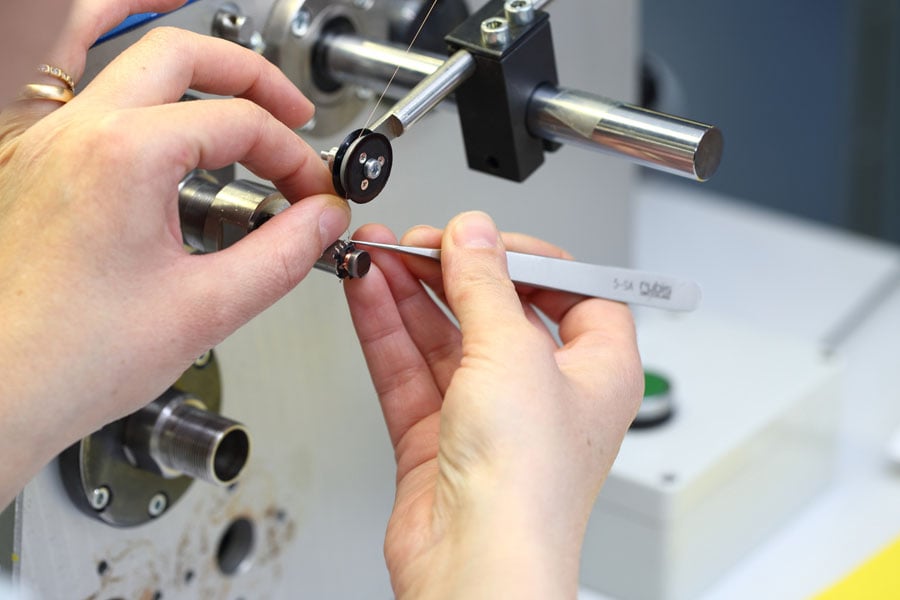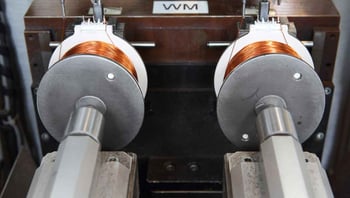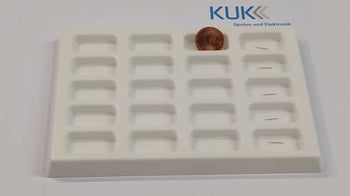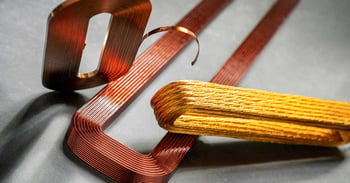Metric vs. imperial: A look at AWG and mm in coil engineering
Both the AWG and metric system (mm) are used in coil design. The choice between them depends on the application, regional and personal preferences of the engineer. Both scales have advantages and disadvantages, and it's important to be familiar with both and convert between them as needed.

The American Wire Gauge (AWG) scale is a logarithmic scale that was originally developed in the 19th century as a standard for measuring the diameter of wire. The AWG scale assigns a specific number to each wire size, with smaller numbers indicating thicker wire and larger numbers indicating thinner wire.
The AWG scale is based on a mathematical formula that relates the wire diameter to its cross-sectional area. Specifically, the diameter of the wire is calculated by taking the 39th root of its cross-sectional area in circular mils (1 circular mil = the area of a circle with a diameter of 1 mil = 0.001 inch). This formula results in a series of numbers that are spaced at intervals that are not linear, but rather logarithmic, which allows for a large range of wire sizes to be accommodated within a relatively small number of AWG sizes.
Converting AWG to mm and vice versa
This table is showing a conversion overview of wire diameter from AWG to mm for the range of AWG 30 - 58:
| AWG | Diameter (mm) |
|---|---|
| 30 | 0.255 |
| 31 | 0.2268 |
| 32 | 0.2032 |
| 33 | 0.1803 |
| 34 | 0.1601 |
| 35 | 0.143 |
| 36 | 0.127 |
| 37 | 0.1131 |
| 38 | 0.1007 |
| 39 | 0.0897 |
| 40 | 0.0799 |
| 41 | 0.0711 |
| 42 | 0.0633 |
| 43 | 0.0563 |
| 44 | 0.0503 |
| 45 | 0.0447 |
| 46 | 0.0399 |
| 47 | 0.0355 |
| 48 | 0.0317 |
| 49 | 0.0282 |
| 50 | 0.0252 |
| 51 | 0.0226 |
| 52 | 0.0201 |
| 53 | 0.0179 |
| 54 | 0.0159 |
| 55 | 0.0142 |
| 56 | 0.0126 |
| 57 | 0.0113 |
| 58 | 0.0100 |
AWG stands for American Wire Gauge, which is a standardized system for wire diameter measurement in the United States. The smaller the AWG number, the thicker the wire. Conversely, the larger the AWG number, the thinner the wire.
Application of AWG scale
The choice between using the American Wire Gauge (AWG) scale or the metric system (such as millimeters) when specifying a coil depends on several factors, including the application, regional preferences, and personal preferences of the engineer. In some regions, such as North America, the AWG scale is more commonly used and understood, particularly for electrical and electronic applications. In other regions, such as Europe and Asia, the metric system is more commonly used for specifying wire size.
Regardless of the system used, an engineer should always take care to specify whether the diameter refers to pure copper (or an alternative to copper) only or includes the insulation layer. This is because, for manufacturing purposes, what ultimately matters is the diameter including the insulation. It's crucial to be clear and consistent when specifying wire diameter, as even small variations can impact the performance of the circuit or device. In addition to being familiar with both the AWG and metric systems, engineers should also be mindful of the conductor materials being used and any specific requirements of the application. By paying attention to these details, engineers can ensure that the wire size is optimized for the intended use and that the final product meets the necessary standards and specifications.
Which system works better in coil engineering: AWG or mm?
From an engineering perspective, both scales have their advantages and disadvantages. The AWG scale has the advantage of being logarithmic, which allows for a large range of wire sizes to be accommodated within a relatively small number of sizes. This can be useful for selecting wire sizes that are optimized for a specific application.
On the other hand, the metric system is more consistent and intuitive for engineers who are used to working with metric units. It can also be easier to convert between metric units, such as millimeters and square millimeters, which are commonly used for specifying wire size in the metric system.
Ultimately, the choice between using the AWG scale or the metric system for a coil design depends on the specific needs of the application and the preferences of the engineer. It's important to be familiar with both systems and to be able to convert between them as needed.










